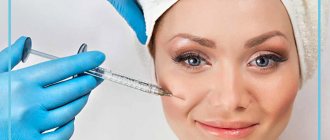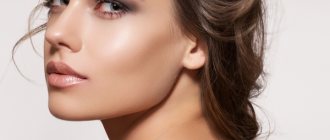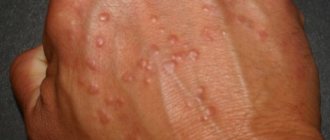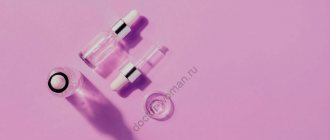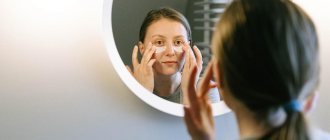Botox is a drug based on botulinum neurotoxin type A, which is produced by Allergan (USA). This word is also used to refer to all analogues of the drug. The botulinum toxin injection procedure gained popularity at the end of the last century and has since remained the most popular non-surgical anti-aging technique.
How Botox works
Botox injection is an effective technique for eliminating facial wrinkles and forming a beautiful facial contour. Essentially, this is a correction without a scalpel.
Botox is a weakened, purified neurotoxic drug based on botulinum toxin. The latter is produced by the bacteria Clostridium botulinum. A powerful neuroparalytic that can relax facial muscles.
Botulinum toxin A has been used in cosmetology for more than 30 years. It is injected into the area of the facial muscle, as a result it relaxes, and the skin relief of the area is noticeably smoothed. The hydrobalance of the deep layers of the dermis is restored, the natural production of collagen and elastin is stimulated.
Botox is used to correct facial contours, smooth out wrinkles on the forehead, in the eye area and nasolabial triangle.
Botulinum toxin: what is it and how does it help in the fight against wrinkles?
The effect of Botox is achieved due to the neurotoxin botulism type A. It is one of the most dangerous poisons in the world, but in cosmetology such microscopic doses of the substance are used that it is not at all difficult for a professional to control its effect and get a positive result.
Naturally, botulinum toxin is not used in cosmetology in its pure form. It is first stabilized and purified from protein impurities in the laboratory.
The effect of Botox is as follows: with an injection, it enters the muscle, blocking the transmission of nerve impulses in it. As a result, the muscle relaxes, its contraction stops, and as a result, the skin adjacent to it becomes smooth.
Exposure time
The duration of the effect of Botox depends on the individual characteristics of the body, habits, and care procedures:
- Age. Typically, botulinum therapy is indicated for people over 45 years of age, but often younger people also need correction. The breakdown of drug substances in a young body occurs faster, so the duration of the effect is reduced.
- Behavior. Poor nutrition, lack of sleep, stress and negative habits affect not only your well-being, but also your appearance - they worsen the effect of injections.
- Quality of the drug. The drug must be original and stored correctly.
At what age can Botox be injected?
Manufacturers do not indicate clear restrictions on the age group, however, most specialists do not work with patients under 18 years of age. Moreover, at such a young age, there are most often no clear indications for such radical anti-aging therapy. The only exceptions are individuals who have a genetic predisposition to the formation of facial wrinkles. Many people mistakenly believe that this phenomenon is associated with overly active facial expressions, but in fact this factor is of secondary importance, after heredity.
When answering the classic question, at what age can Botox be injected, most experts still determine the age group from 30 to 45 years, when the drug will demonstrate the most pronounced effectiveness. At the same time, for elderly patients over 60 years of age, the relevance of Botox is lost every year, due to the manifestations of age-related tissue ptosis, which is noticeable even when the muscle is in a relaxed state.
Signs of Botox working
It is easy to feel the effect of botulinum toxin after the procedure: the facial muscles at the injection site stop working almost immediately, although a trace of the wrinkle will still be visible. For example, it will not be possible to frown your forehead, and, therefore, folds on the skin will not be able to form.
On days 5-7, the distribution of the drug ends, the effect becomes maximum: the skin is noticeably fresher, acquires a healthy shine and tint, and cosmetics fit perfectly on it. Even deep wrinkles are gradually smoothed out.
When administered correctly, Botox injections do not turn the face into a “mask.” There will still be facial expressions and emotions. To get truly excellent results, contact beauty centers - cosmetologists with extensive experience work there.
How long does the effect of Botox last?
How effective Botox is is perhaps one of the most frequently asked questions. Here it should be understood that there simply cannot be an unambiguous answer to this question, since the duration of local muscle relaxation will, like the speed of achieving the effect, directly depend on the metabolic functions of the body, more simply, on the metabolic rate. However, experts say that after the first administration of the drug, the average duration of action of Botox will be from 4 to 6 months.
Also, speaking about the duration of action of Botox, it is simply impossible not to mention the increased effectiveness of the drug with repeated administration. Repeated injections show a significantly longer lasting effect, which can range from 8 to 12 months. In addition, regular use of botulinum therapy often gives the cosmetologist the opportunity to reduce the dosage. This is largely explained by the fact that being stationary for a long time, the facial muscle loses the “habit” of actively moving, and a person loses the habit of “frowning,” which reduces the load on the facial muscles and the severity of wrinkles.
Repeated procedures
After Botox is removed, you can repeat the course to get the results back. Wait until your facial muscles have fully recovered to get the best results.
If Botox was administered for the first time, a corrective session is usually carried out after 8 months. All subsequent injections are performed at intervals of 4-6 months. With this technique you can maintain consistently good results.
If procedures are performed too often, the sensitivity of the dermis and nerve structures increases significantly. Botox dissolves faster each time, correction is required more often.
Possible consequences of injections
No side effects have been reported with long-term use of botulinum toxin (Botox Acid Injections, Dysport). Rarely, the patient experiences local side effects that disappear successfully after a few days (sometimes after 2-3 weeks).
Minor effects may include swelling, mild headache, redness or soreness in the injection area. Post-injection hematomas (up to 7 days) and eyelid ptosis (up to 6 weeks) may appear.
The cause of side effects is the penetration of the drug into neighboring muscles. The successful use of botulinum toxin has demonstrated excellent tolerability of the drug and a long-lasting effect with an integrated approach in modern antiage therapy. The final injection of botulinum toxin fixes the effect after chemical peelings, mesotherapy, biorevitalization, and hardware cosmetology.
Is it possible to extend the result?
Follow all the cosmetologist's recommendations to get the maximum, safe and prolonged effect of the procedure.
We will consider the main recommendations below:
- Physical activity in the first 7-10 days after the session significantly reduces the effect of botulinum therapy.
- There are no additional jokes between the main courses! They will provoke the production of antibodies, which destroy the toxin and reduce its effect to a minimum.
- Avoid solariums, baths and saunas.
- Assess the compatibility of current pharmacotherapy with contraindications to botulinum therapy.
The technique has the following contraindications:
— Patient hypersensitivity to the components of the drug used.
- Myasthenia gravis, myasthenic syndrome and myasthenic-like syndrome (including Lambert-Eaton syndrome).
— Diseases with blood clotting disorders.
— Compounded allergy history.
- Any acute infectious diseases.
— Pregnancy, lactation.
- Taking antiplatelet agents, anticoagulants, antibiotics or muscle relaxants.
— Unstable mental state of the patient.
- Alcohol abuse.
Lifestyle after the procedure
The strictest recommendations for the first 3 days after the session:
- Avoid alcoholic drinks: ethyl alcohol increases blood flow to the face.
- Do not take hot baths or go to the sauna.
- Avoid visiting the beach and solarium.
- Protect your face from direct sunlight.
- Avoid even minimal physical activity.
- Do not take muscle relaxants, tetracycline antibiotics, or B vitamins.
- Do not massage the injection area.
Advantages of the technique
The use of botulinum toxin injections in cosmetology has many advantages:
— This is the only method of rejuvenation that effectively blocks the muscles of the face and neck.
— A unique method allows you to eliminate the patient’s sweating for a long time.
— Botulinum toxin injections are painless, low-traumatic and do not require anesthesia.
— The procedure is carried out quite quickly and once, which saves the patient’s valuable time.
— The habit of not constantly using the facial muscles of the eyebrows and forehead can persist after the end of the effect, which will reduce the number of wrinkles.
— Botulinum toxin is the only cosmetic drug that is widely used in modern pediatrics
Undesirable effects
It is impossible to predict in advance how the substance will be distributed, how muscle fibers will react to the effects of botulinum toxin.
Typical side effects are redness of the facial skin, the appearance of papules, pain, and swelling.
Rare complications and their causes:
- Strong relaxation of the frontal muscles gives the effect of lowered eyebrows.
- Excessive botulinum toxin injections can lead to eyelid spasm.
- Excessive physical activity and ignoring recommendations are a common cause of asymmetry, bruising, and articulation disorders.
- Individual reaction: headaches, lumps and papules at injection points, increased intraocular pressure.
How it works Botoxic acid and Dysport injections
Botulinum toxin type A is a lyophilized, purified drug of protein origin. Its effect is a long-term blockade of the transmission of impulses coming from nerve terminals to muscle fibers. As a result, persistent muscle relaxation is observed.
You can read about cryo-rejuvenation at this link.
The main reason for the appearance of facial wrinkles is constant and involuntary muscle contraction. This phenomenon often manifests itself in young people, due to hereditary predisposition and emotional stress. In men it is observed more often than in the fairer sex. Excessive expression wrinkles cause not aesthetic, but also communication problems.
A frowning and gloomy expression interferes with communication with others, and simple facial peeling will not help here. Tension can trigger headaches and cause neurological diseases. Therefore, correction of facial wrinkles is a cosmetic and therapeutic procedure.
What mistakes can a cosmetologist make?
Cosmetologist mistakes are the most common cause of negative consequences. Two main violations of the doctor:
- Failure to comply with dosage rules;
- Incorrect identification of injection points.
For these reasons, the face may swell, ache, and have difficulty eating and moving muscles. Most often, patients receive botulinum toxin injections in the forehead and between the eyebrows, the consequences of which lead to asymmetry and drooping of the eyebrow arches.
According to statistics, such complications appear in only 2-10% of patients.
Botox and other cosmetic procedures
Mesotherapy and botulinum toxin, peeling and Dysport, Botox and facial massage - the compatibility of these manipulations is of active interest to all our patients. In some cases, we recommend not resorting to anti-aging Botox injections for now, but taking advantage of the possibilities of biorevitalization. Of course, the procedures and their principle of influence are very different. Mesotherapy is intradermal injections that nourish with vitamins and moisturize; they do not affect the muscles. For those who are recommended the overall effect of different types of manipulations, there is one rule - a long time should pass between sessions. As for rejuvenating facial massage and Botox, it is obvious that these are mutually exclusive procedures for a certain period, since they have the opposite effect on the skin. But before the procedure, a massage is even recommended.
Consequences of constant use of botulinum toxin in cosmetology
Botulinum toxin began to be used in cosmetology practice relatively recently. Information about the consequences of constant use is only accumulating. Even if the patient does not feel a negative impact, paralysis of the facial muscles still leads to problems:
- Flabbiness and dryness of the skin;
- General disturbance of facial expressions;
- Atony (decreased tone).
These troubles appear after a long time. Scientists have not yet come to a common opinion about the effect of constant use of botulinum toxin on the human body, since the effect of the drug has not been fully studied.
ADMINISTRATION TECHNIQUE
The experience of cosmetologists shows that the best results are obtained by injecting Botox into the following muscles:
MUSCLES DEVELOPING THE ANGLE OF THE MOUTH
Injections allow you to lift the corners of your mouth up, remove the “sorrowful” expression on your face, straighten small wrinkles in the corners of your mouth, and remove “puppet lines.”
The Botox injection procedure will be effective only for those who do not yet have significant sagging tissue in the lower part of the face.
A combination of Botox and hyaluronic acid fillers is effective.
Inject 1-2 units of Botox just below the corner of the mouth, 1 point on each side.
PLATISM (SUBCUTENA MUSCLE OF THE NECK)
Injecting Botox can give the neck a more natural contour, eliminate “turkey band” stretch marks in the subcutaneous muscle, and give the neck skin a more youthful appearance.
In addition, the immobilized platysma stops pulling the skin of the cheeks down, which is an excellent prevention of the formation of “bulldog cheeks.”
An overdose of Botox in this area can cause swallowing problems. Therefore, during the first procedure, only the minimum dose of the drug is administered, the rest of the botulinum toxin is administered no earlier than two weeks later.
The procedure will be ineffective in people with a significant amount of subcutaneous fat in the area of the double chin and neck, as well as in those who have significant gravitational sagging of the soft tissues of the lower part of the face.
Enter 2 units. Botox on both sides of the muscle cord at a distance of 2 cm between the injection sites.
CIRCULAR EYE MUSCLE
Botulinum toxin is injected intramuscularly only into those areas of the muscle located at the outer corner of the eye.
Botox injections can reduce the severity of crow's feet and prevent deepening of skin creases in this area.
Immobilization of the upper part of the orbicularis oculi muscle allows the frontalis muscle to raise the eyebrow upward and give the eyes and face a generally cheerful and open expression.
At the outer corner of the eye, 6-10 units of Botox can be injected both subcutaneously and intradermally. In the lower eyelid area, injections are carried out only intradermally, using a minimal amount of injected botulinum toxin. To raise the eyebrow, 6-10 units of Botox are injected above the eyebrow line, closer to the inner edge of the eye.
CIRCULAR ORAISE MUSCLE
Injections allow you to smooth out purse-string wrinkles around the mouth and visually enlarge your lips by eliminating the habit of constantly pursing your lips.
Enter 1 unit. Botox in 4 points above the upper lip and two points under the lower lip.
CHIN MUSCLE
Injecting Botox can smooth out uneven skin on the chin, especially if the uneven skin becomes more pronounced when talking.
Enter 4-6 units. Botox injection into two symmetrically located skins on the chin intramuscularly.
NASAL MUSCLE
Typically, the nasal muscle is injected with Botox at the same time as botulinum toxin is injected into the procerus and corrugator muscles.
This is due to the possible appearance of longitudinal wrinkles on the bridge of the nose when blinking as a compensatory reaction after immobilization of the muscles in the area above the inner ends of the eyebrows.
The nasal muscle is blocked by injecting 1-2 units of botulinum toxin into 1-2 points.
THE MUSCLE OF THE PROUD AND THE MUSCLE THAT WRINKLES THE EYEBROW
When these muscles are paralyzed, vertical creases in the skin between the eyebrows are smoothed out.
Botox is administered in an amount of 8-16 units at 4-6 points in the projection of the location of both muscles.
FRONTAL MUSCLE
Longitudinal forehead wrinkles are smoothed out.
The drug can be injected into different areas of the muscle and, depending on this, different effects can be obtained: eliminating wrinkles on the forehead, raising certain areas of the eyebrows, creating the effect of an open eye.
An overdose of the drug leads to the formation of a frowning effect, when the eyebrows hang low over the eyes, and sometimes with the inner ends of the eyebrows retracting under the arch of the orbit.
Various techniques can be used to immobilize the frontalis muscle, the most common of which is the V-shape. This area typically requires 12-20 units of Botox.
RATE OF ONset OF EFFECT AND DATE OF EFFECT OF THE DRUG
The first signs of paralysis of the muscles into which Botox was injected will be noticeable within a few hours after the injection.
Weakening of muscle contractions usually occurs on the second or third day after the procedure. It is at this speed that botulinum toxin enters the nerve endings.
The maximum effect of the injection will develop within 1-2 weeks after administration of the drug.
The rate of onset of the maximum effect depends on the administered dose of botulinum toxin and the individual characteristics of the patient and his sensitivity to the action of the drug.
The effect of the injection ends as quickly as new synapses of nerve endings with muscles can form (the zones where the impulse directly transfers from the nerve to the muscle cell). This process usually takes from 3 to 6 months. In some cases, the effect of Botox can last up to a year.
The indication for a new injection is such a weakening of the effect of Botox when contraction of the facial muscles becomes visually noticeable.
It has been proven that with the help of ozone therapy it is possible not only to treat existing problems with the skin of the face, but also to prevent their occurrence.
IN THE ARMPITS
Before introducing Botox into the skin of the axillary area, a Minor test is performed, thanks to which the exact location of the sweat glands and their functional activity can be determined.
Each armpit requires about 50 units. botulinum toxin. The sweat glands stop functioning for a period of 3 to 6 months. The method is good for those who suffer from excessive sweating.
VILEO: MEDICAL COSMETOLOGY
UNDER THE EYES
To smooth out small wrinkles in the lower eyelid area, intradermal papular administration of the drug in a minimum concentration of 1 unit can sometimes be used. There can be no more than 4 such injections in the area of each eye.
BOTOX IN THE EYEBROW (BETWEEN THE EYEBROWS)
Immobilization of the proud muscles and the corrugator muscle is often performed on young patients in cases where there is a habit of constantly straining the muscles or the tone of these muscles is constantly increased.
In some cases, repeated injections in this area may not be necessary for a long time. This is due to the fact that the habit of drawing eyebrows and frowning can fade away within 3-5 months of the drug’s effect, and in the area of creases the skin will have time to smooth out and will be able to resist the formation of creases for some time.
BOTOX IN THE NASOLABIAL FOLDS
It is extremely rare that nasolabial folds are corrected with Botox. This is due to a high risk of developing complications such as drooping corners of the mouth. At the same time, the simultaneous use of filler based on hyaluronic acid or collagen with injections of small amounts of Botox allows you to get excellent results.
This is due to the fact that when the muscles are relaxed, the preparation of hyaluronic acid or collagen remains in the tissues much longer and helps improve the structure of the skin, especially at the bottom of the creases, where collagen is usually deposited slowly.
BOTOX FOR MIGRAINE
Typically, Botox is administered for medical reasons to patients who suffer from migraines more than 15 days a month. In this case, injections are carried out in the head and neck area every 12 weeks.
Such injections only help those who have been diagnosed with a severe form of migraine. If your head hurts from time to time and the pain intensity is weak or moderate, then Botox injection may not give any result. FOR MEN
Yes. Men are now increasingly injecting themselves with Botox to give their faces a well-groomed appearance and their overall appearance to look youthful.
When administering Botox to men, the following significant differences are taken into account:
- Thicker and denser skin, therefore Botox injections often need to be carried out to a greater depth;
- The dose of the administered drug is usually greater in men compared to women, since their facial muscles are more developed and their contractions are stronger;
- The injection points for the drug may differ significantly in men due to the fact that what is beautiful on a woman's face (for example, raised arched eyebrows) will look bad on a man's face.
Myths about the effectiveness of Botox
- Myth #6: Botox eliminates all lines and wrinkles. This is not true. The drug removes only dynamic wrinkles that arise due to facial expressions and disappear with rest. It is ineffective against permanent (static) lines.
- Myth No. 7. The results of using drugs are permanent. In fact, they last for about six months, after which the injections must be done again.
- Myth No. 8. Botox will provide you with a look like from the cover of a glossy magazine. In fact, such results cannot be achieved with botulinum toxin alone. A combination of injections with other aesthetic techniques, including surgical operations, is necessary.
- Myth No. 9. The procedure is only good for cosmetic purposes. The truth is that Botox is often used as a treatment measure. It is used to treat excessive sweating – hyperhidrosis and even migraines. Therefore, this method can be considered therapeutic and prophylactic.
It is impossible to debunk all the myths about Botox in one article. Therefore, it is better to consult a cosmetologist who will answer all your questions. This will help you not be afraid of a procedure that makes you look younger and more attractive.
Are injections to the face dangerous?
Before you decide to undergo the procedure, you need to find out the dangers of botulinum toxin injections in the face. The only confirmed danger is an allergic reaction. Over the history of botulinum therapy, there have been about 30 official deaths as a result of anaphylactic shock. Allergies have the same symptoms as when using other medications - itching, swelling, redness.
The most dangerous areas for injections are the areas around the eyelids and lips.
